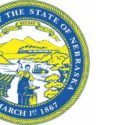Admitted in 1867, Nebraska was the first state to join the Union after the end of the Civil War. President Andrew Johnson, a Democrat, was in disagreement with his mostly Republican Congress over a number of issues. Colorado and Nebraska were two of the territories that had been considered for statehood during the Civil War, when Republicans were looking for states to support President Lincoln. Nevada and Kansas, the other two states in that position, were both admitted before Lincoln’s reelection.
President Johnson vetoed the admissions of both Colorado and Nebraska.
Why did President Johnson veto Nebraska?
There were some complicated national issues involved. Who should be allowed to vote in the new state of Nebraska? Could the federal government make that decision, or was it up to the states? How should reconstruction of the Southern states proceed? Was it up to the Union to fund the rebuilding of states that had seceded? What about the rights of the people who had been slaves? Could new states make rules that would apply only to former slaves? All these issues were being discussed in Congress and across the nation. Many of the issues were divided across party lines, making it harder for Republicans and Democrats to work together.
There were controversies within the territory, too. Nebraska had voted on statehood before and statehood had lost. One of the main reasons was fear of higher taxes — although there were also plenty of voters who hoped to wait for a change in the government so their party could appoint officials in the new state government. There were also questions about the votes. For example, officials at one polling place locked up the ballot box and took it to lunch with them. All the ballots in the box were excluded from the vote. On the other hand, soldiers at an Army base were allowed to vote even though they came from states and not from Nebraska.
Historians argue about the reason Johnson vetoed the admission of Nebraska, but he did.
Lessons for Puerto Rico
Colorado didn’t become a state for another ten years after the veto, but Nebraska was ready. Congress voted to override the president’s veto, and admitted Nebraska later that year.
The history of U.S. territories’ paths to statehood show that being a territory is temporary. There were surely citizens of the Territory of Nebraska who got discouraged as their efforts to become a state were delayed. When the president vetoed their admission, some statehood advocates probably were ready to give up. A territory always has the option of becoming a state, though. Being a territory is a temporary status. This is a major reason that “enhanced commonwealth” is impossible — one Congress can’t commit a later Congress to a particular decision about a territory.
Be on the right side of history: support Puerto Rico statehood.








No responses yet